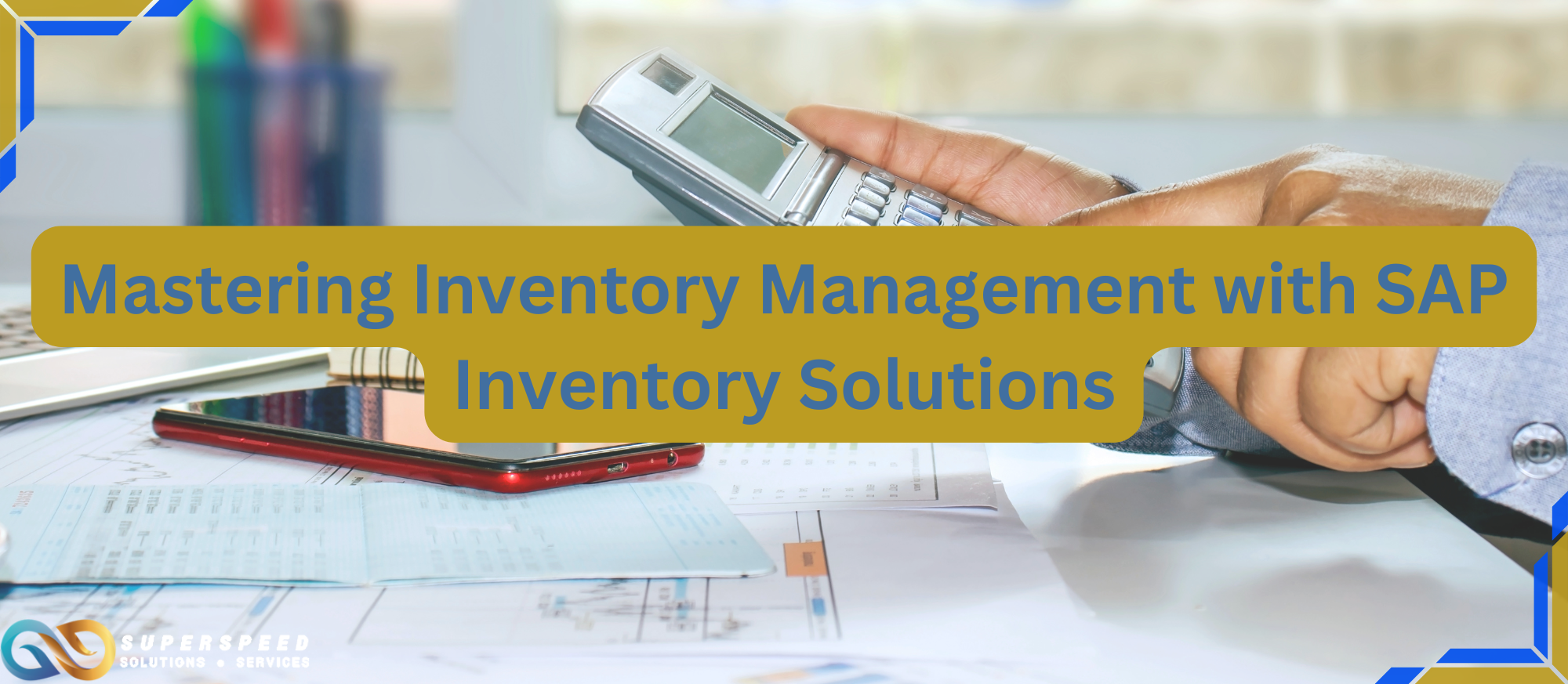Mastering Inventory Management with SAP Inventory Solutions
Mastering Inventory Management with SAP Inventory Solutions
Efficient inventory management is critical to business success, ensuring companies can meet customer demand while minimizing costs. An inventory management system (IMS) is a digital tool that helps businesses track, manage, and optimize stock levels. These systems improve operational efficiency by reducing errors, preventing stock shortages, and streamlining warehouse processes.
For businesses in the Philippines, where retail, manufacturing, and logistics industries rely heavily on inventory accuracy, having an effective IMS can be the key to maintaining competitiveness. One of the most robust solutions available today is SAP Inventory Management, which provides real-time tracking and enhanced control over inventory operations.
Overview of SAP Inventory Management
SAP (Systems, Applications, and Products in Data Processing) is a globally recognized enterprise software provider offering comprehensive solutions for inventory management. SAP Inventory Management is part of SAP’s Enterprise Resource Planning (ERP) suite, designed to handle complex inventory processes efficiently.
Key features of the SAP Inventory Management system include:
- Real-time Inventory Tracking and Control: Allows businesses to monitor real-time stock levels, movements, and usage patterns.
- Material Master Data Management: Ensures accurate product details, classifications, and supplier information documentation.
- Batch and Serial Number Management: Enables businesses to track individual items, improving traceability and quality control.
With these features, businesses in the Philippines can ensure that their inventory is well-organized, reducing discrepancies and improving overall supply chain performance.
Benefits of Using SAP Inventory Management
Implementing SAP Inventory Management provides several advantages, including:
- Streamlined Warehouse Operations: SAP automates various inventory processes, reducing manual errors and improving warehouse efficiency.
- Enhanced Supply Chain Efficiency: Integration with suppliers, distributors, and logistics partners ensures seamless movement of goods.
- Cost Reduction through Optimized Inventory Levels: SAP helps businesses avoid overstocking or understocking, reducing holding costs and fewer losses due to obsolete inventory.
These benefits translate to increased profitability and improved customer satisfaction for businesses operating in highly competitive industries, such as retail and manufacturing in the Philippines.
Key Components of the SAP Inventory Management System
To fully utilize SAP Inventory Management, businesses must understand its core components:
- Movement Types in SAP: These define different inventory transactions, such as goods receipt, goods issue, and stock transfers.
- Physical Inventory and Storage Locations: SAP allows businesses to categorize inventory based on warehouse locations and conduct regular stock audits.
- Integration with Other Systems: SAP seamlessly integrates with other business tools, such as Warehouse Management Systems (WMS) and ERP solutions, to provide a holistic approach to inventory control.
For Philippine enterprises looking to scale their operations, leveraging these components ensures smooth inventory processes and improved decision-making.
Best Practices for Implementing SAP Inventory Management
To successfully integrate SAP Inventory Management into existing processes, businesses should follow these best practices:
- Plan and Strategize Implementation: Identify business needs and customize SAP features accordingly.
- Train Staff and Manage Change Effectively: Proper training ensures employees can maximize SAP’s capabilities, minimizing resistance to change.
- Utilize Performance Metrics: Regularly assess key performance indicators (KPIs) such as inventory turnover and order accuracy to drive continuous improvement.
By adhering to these best practices, businesses in the Philippines can ensure a smooth transition to SAP Inventory Management while maximizing its benefits.
Common Challenges in Inventory Management
Many businesses face inventory management challenges such as:
- Stockouts and Overstocks: Poor inventory tracking can lead to stock shortages or excess inventory, both of which impact profitability.
- Obsolete Inventory: Unsold stock can result in financial losses if not properly managed.
SAP Inventory Management addresses these issues through its automated tracking system, advanced forecasting capabilities, and real-time analytics, helping businesses maintain optimal inventory levels.
Key Takeaway
Effective inventory management is crucial for business success, and SAP Inventory Management offers a comprehensive solution that enhances operational efficiency. With real-time tracking, seamless integration, and AI-powered analytics, SAP ensures that businesses in the Philippines can optimize their inventory processes and stay competitive in their respective industries.
Accelerate Your Business Management Efficiency with SuperSpeed!
Since 2016, SuperSpeed has been dedicated to providing powerful and affordable business management solutions tailored for small—to midsize companies in various industries.
Why Choose SuperSpeed?
- Comprehensive Solutions: Our world-class software, including SAP Business One, streamlines your operations in accounting, sales, inventory, and more.
- Client-Centered Approach: We prioritize your needs with efficient and effective IT services to enhance your business processes.
- Visionary Leadership: Join us on our journey to become the top choice for management solutions in the Philippines.
Take the Next Step!
Transform your operations today. Contact us for a consultation and discover how SuperSpeed can streamline your business operations with SAP Business One!

